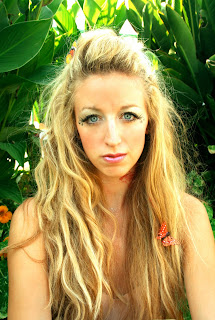 On my first photographic adventure, Rachel, Stephanie, and I experimented with the dystrophy and random arrangement of a construction site and the clean lines and contrast of black and gold dress items. We used the surrounding elements as inspiration for our poses and a free standing lamp as our source of lighting. Looking back, there is a lot that I would change and utilize, especially as far as lighting is concerned, but the naive experimentation produced photos that I could not replicate now if I tried. When I look at these pictures, I feel as sense of misunderstanding that is derived from our intentional use of contrast.
On my first photographic adventure, Rachel, Stephanie, and I experimented with the dystrophy and random arrangement of a construction site and the clean lines and contrast of black and gold dress items. We used the surrounding elements as inspiration for our poses and a free standing lamp as our source of lighting. Looking back, there is a lot that I would change and utilize, especially as far as lighting is concerned, but the naive experimentation produced photos that I could not replicate now if I tried. When I look at these pictures, I feel as sense of misunderstanding that is derived from our intentional use of contrast. Another shoot Rachel and I did together was during a day of unpredictable weather in Malibu. I was obsessing over the fantasy of the ocean, and though I did not plan it, the placement of these pictures indicates a forlorn nature of two girls exposing a beach of infinite, soft waves and foam and a developing storm. I see a world where we become our surrounding elements, and in the first few pictures, I feel I am being lured by the seduction of the waves to a new world where I release my body and become the water. Rachel demonstrates the vast mystery of the ocean while reflecting the combination of soft and sharp angles that can be found in the waves, shoreline, and horizon. To remedy all of this artsy talk, I suggest you just enjoy the scenery in these pictures :)
Sleeps With ButterfliesOn another collaborative photo shoot Rachel and I used the symmetry, colors, and beauty of butterflies as our inspiration. I wanted myself and the viewer to feel that they stumbled upon something intimate and private, yet ordinary and often overlooked. While many people appreciate the aesthetic of nature, it is very rare that they stop to think of all of the activity that may be too small to see. While an ant scurrying is very common, its task is its own and it is an individual amongst trillions. However, every small movement effects our entire ecological system and we often forget to appreciate the beauty of the most ordinary of landscapes...
... I also feel like I've come across a mythical creature, something that only lives in the existence of our imaginations...
















